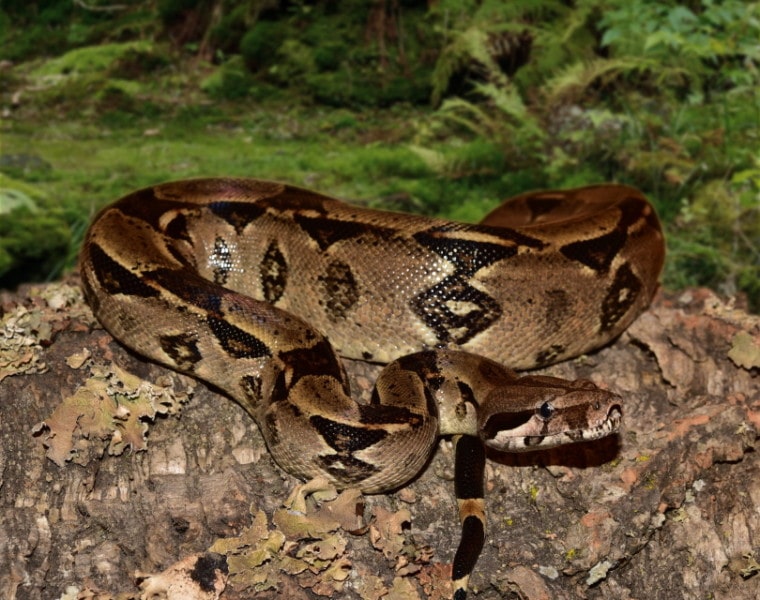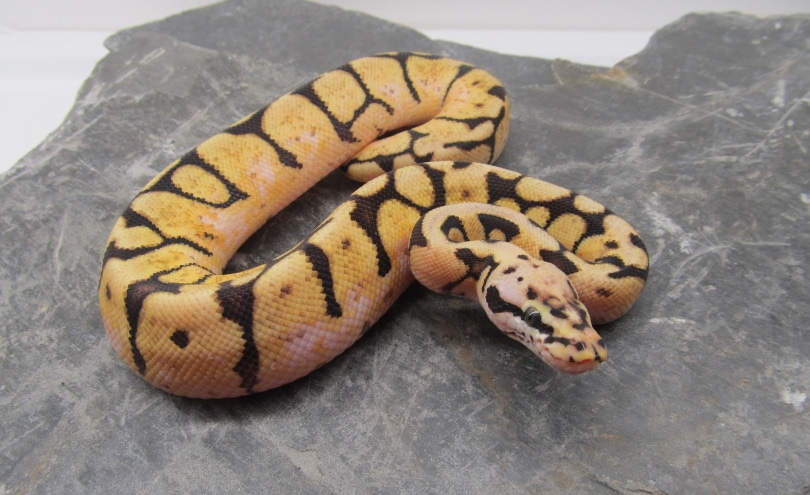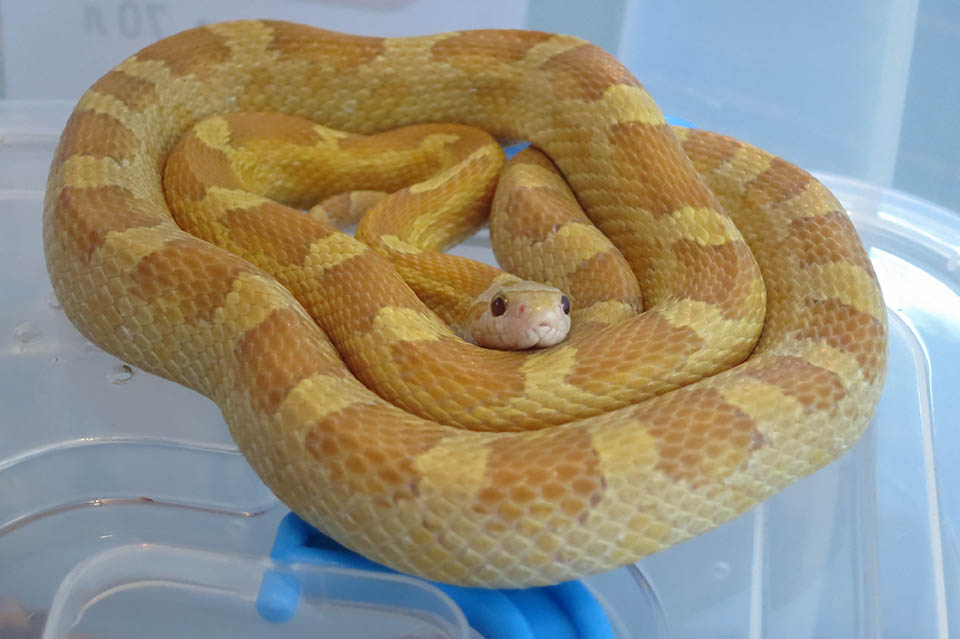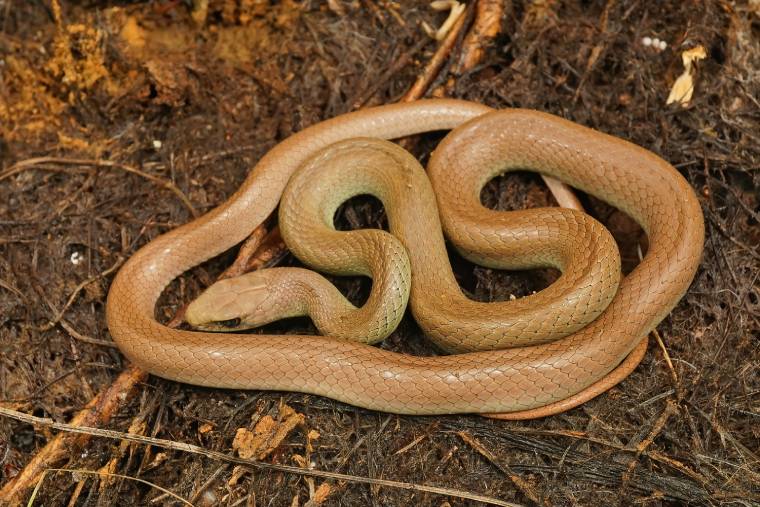
When most people think of snakes, we think of deadly fangs, lethal venom, and the shaking of a rattlesnake’s tail. However, this general stereotype fails to consider some significant variation between species. Not all snakes are venomous, obviously. Such is the case of the boa constrictor, who’s primary offensive (and defensive) weapon is right there in its name—constrictor. Boa constrictors don’t have fangs and they’re most certainly not venomous.
However, boas do have teeth and their bite — should you experience it — is painful, but the bite itself is not particularly dangerous.
What’s the Difference Between Poisonous and Venomous?
The word ‘poisonous’ means “causing or capable of death when taken into the body” while ‘venomous’ means “(of an animal) secreting a poisonous substance, usually injected into the body by stinging or biting”.
In layman’s terms, if you bite something and get sick, it’s poisonous. If it bites you and you get sick, it’s venomous.
The snake itself is not poisonous; it’s venomous. The snake’s venom, on the other hand, is poisonous.

How Do Boa Constrictors Kill Their Prey?
Boas have no such fangs or venom to speak of. So, just how do they kill their prey?
True to their name, they wrap their bodies around their prey and squeeze the life out of them! A common misconception is that boas kill their prey by suffocation; however, scientists have recently discovered that the demise of their prey is quicker and more painless than suffocation.
As Researcher Scott Boback at Dickinson College in Pennsylvania confirmed, when a boa squeezes down on the body of its target, the force is so great that the body’s blood flow is stopped completely. The study was conducted on rats implanted with electrocardiogram electrodes in the arteries, which carry the blood away from the heart, and the veins, which carry the blood back.
Within seconds, the rats’ arterial blood pressure dropped, and their venous pressure rose, meaning their hearts could move blood in neither direction. Their potassium levels went through the roof, likely from burst cells, suggesting that they’d gone into cardiac arrest.
Though the scientists did not utilize any means to track brain activity, Boback notes that the lack of blood supply to the brain would likely hasten the rats’ departures.
Boas do not need venom to kill their prey; they’re armed and dangerous without it.

Are Boa Constrictors Dangerous to Humans?
The boa’s lethal reputation is not exactly well-deserved. Harmless might be a stretch, but boas are not generally aggressive creatures. But most animals with teeth or fangs — even’s man’s best friend — will strike in self-defense. Though there are records of injury from a particularly tight squeeze from a boa, these incidents do not represent most interactions with domesticated boas.
The frightening stigma carried by the boa is due to its size—it’s pretty large compared to many common house pets, growing anywhere from 6.5 to 9.6 feet long. The humorously scientifically inaccurate 1997 American horror film, Anaconda didn’t help with the boa’s public relations campaign, either. The film erroneously portrayed a group of scientists in the Amazon Rainforest being hunted by a giant, green Anaconda — a member of the Eunectus genus of the Boidae family — a thing that just does not happen in real life.
In real life, even green anacondas are incredibly docile with humans. Herpetologists in South America often capture Green anacondas during the day by simply walking up to them and carrying them away. Constrictor snakes, in general, are pretty docile and don’t really go around picking fights with humans. Most injuries by boas are a reaction to being startled or a case of mistaken identity.

Can I Keep a Boa Constrictor as a Pet?
Yes. Most states allow the care and keeping of boas with some notable exceptions — namely, anacondas and some more exotic boa species, such as the Emerald Tree Boa. Rare and endangered boas, such as the Puerto Rican and Argentine boas, are notable exclusions from most states’ legalities. In terms of actual boa constrictors, those of the Boidae constrictor species, these snakes are actually legal in most states without a permit!
What Should I Know Before Buying a Boa?
Before buying a boa constrictor, or any animal, you should consider the animal’s needs before you purchase it. With proper care and socialization, boas can make excellent exotic pets.

Habitat and Maintenance
Boas need to be kept in a terrarium that will be large enough for them to grow into. As with any animal enclosure, bigger is usually better, and an adult boa will need a terrarium that is 6 to 8 feet long and 2 to 3 feet wide and tall. It should have no less than 10 square feet of floor space.
While it’s possible to start with a smaller enclosure and work your way up, having an enclosure that is big enough will give the snake room to grow, and you won’t be worried about replacing the enclosure in the future. These powerful reptiles will also escape if given a chance; making sure that the enclosure is secure enough to hold them inside is vital to ensuring the safety of your boa.
Socialization
Also, while boas are generally not aggressive, any creature will feel defend itself when threatened. Socializing your boa is essential to ensure that it does not fear humans. The boa should not be allowed or encouraged to constrict around a person’s body, even gently, to avoid injury.

Safety Precautions with Children
Children should never be left alone with a boa. Even if the boa is well socialized, children are still learning how to interact with the world around them and are not equipped to be handling any animal unsupervised. Boas are much larger than the average child, and startling the boa at the wrong time could result in the child being injured or even killed by the frightened snake.
That doesn’t mean families can’t own a boa if they desire. It just means that they have to be vigilant about educating their children about the proper handling of the snake.
Conclusion
So, there you have it. Boa constrictors are not venomous but that doesn’t mean they’re harmless. They can and will bite, and if threatened, may use their constrictive abilities to ward of an unwanted interaction. Nevertheless, boa constrictors make wonderful pets, provided you have the knowledge and wherewithal to care for them properly.
See Also:
Featured Image Credit: Piqsels







